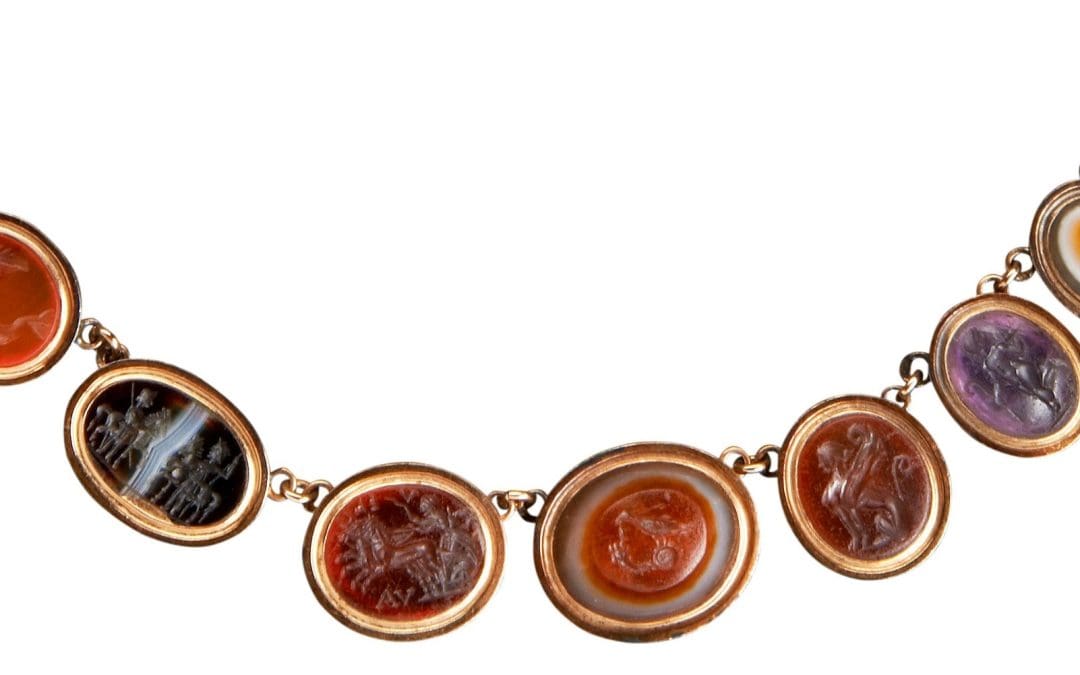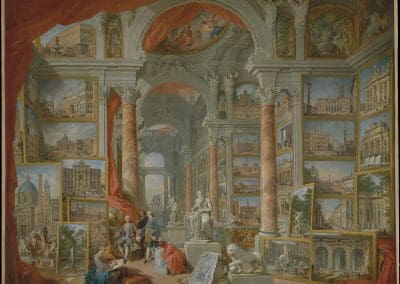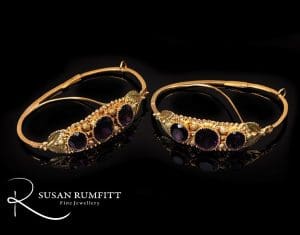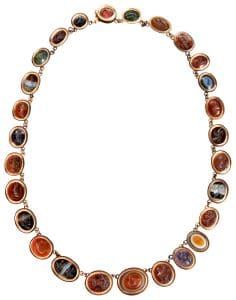The Rise of Neoclassicism
By the mid 17th century, the flamboyant rococo style was at its peak, with ladies towering hair and huge skirts were festooned in glittering gem encrusted flowers, scrolls, and feathers. However, the frivolities were soon to come to an end.
The Grand Tour
The relative peace of the time made travel through Europe easier, and the young gentlemen of England took full advantage to complete their classical educations. Embarking on The Grand Tour they journeyed around Europe returning with ‘souvenirs’ designed to show their taste and sophistication. The discovery and excavation of Pompeii and Herculaneum sparked intellectual interest at home and the more sober and intellectual neoclassical style gradually emerged in direct and deliberate contrast to the frivolous and extravagant rococo.
Revolution
In France the change was more decisive as the French revolution put an emphatic stop to the extravagance and largely to the making and wearing of jewellery. Diamonds, pearls, and gemstones, including pieces from the French crown jewels, were smuggled into England. They were eagerly bought by the aristocracy to be worn at the whirlwind of social events that the party loving Prince of Wales encouraged.
Classical influence
As stability returned in France the fashion was for pure clean lines, emulating the classical elegance of Greek statues. Dresses was high waisted with flowing diaphanous skirts and jewellery was simple and understated with classical designs such as Greek keys or laurel leaves. Hair was worn piled high ‘a la grecque’ with large, but light earrings in hoops or lozenge shapes which fastened at the front and were called ‘poissardes’.
Without the privations of the revolution but still having to contend with the British weather, English women dressed a little more warmly and opulently. Whist the French dresses were skimpy and resembled undergarments, British ladies preferred exotic fabrics and jewels from distant lands. Their hair was often decorated with central jewelled hair ornament holding ostrich feathers, perhaps over an exotic turban ‘a la Turque’.
Napoleonic classicism
Napoleon adored the neoclassical style with its associations of mighty empires and intellectual rigour. However, he wanted a big display of grandeur in jewellery to suit his ideals of power, glory, and his personal importance. Fortunately, Josephine, was happy to oblige as she adored jewellery. Perfectly positioned, and with exquisite taste she lead the fashionable elite who readily adopted her style to make jewellery an indispensable part of classical attire.
Parures, or matching sets of jewels, were essential on both sides of the channel for formal wear with wealthy women owning several sets. Usually presented in a fitted case, a parure might contain as little as two pieces (demi-parure) or as many as sixteen, including a necklace, a pair of earrings and bracelets, brooches, belt buckle, ring, tiara, hair ornaments, and buttons.
Cameos and intaglios
The epitome of neoclassicism, cameos and intaglios were enormously popular and set in every type of jewellery from tiara to rings, usually mounted in plain gold collet settings. Whilst ancient carvings carried the highest prestige, there was also a thriving industry carving contemporary pieces to meet the demand, with Napoleon opening a gem carving school and Josephine owning several cameo tiara parures. Cameos were even produced in glass and pottery with the best being made by James Tassie and Josiah Wedgewood respectively.
Part 3 of this blog on Georgian Jewellery will cover jewels and fashions of the late Georgian period.






